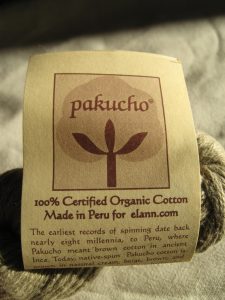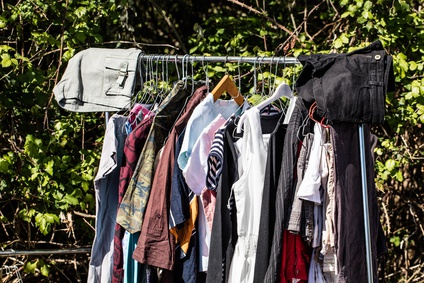By Kristian Steensen Nielsen & Wencke Gwozdz.
- Clothing behaviors might be well-intended, but they do not necessarily reduce environmental impact
- Environmentally friendly clothing in one geographical location may not be environmentally friendly in another
- Our judgments are likely influenced by prevailing options of environmentally friendly clothing consumption, which may overshadow less known but more effective behaviors
Approximate reading time: 4-5 minutes
The production, purchase, maintenance, and disposal of clothing carry a heavy environmental burden. To reduce this burden, we need to change our clothing consumption behavior. An increasing number of consumers accept this notion, but what does it actually imply to make our clothing consumption more environmentally friendly? Should we purchase products made from organic cotton, reduce our clothing consumption, rent and share clothing, or all of the above?
In the preparation of a recently published research article (Gwozdz, Nielsen & Müller, 2017), we were confronted and puzzled by exactly these questions. What we came to realize was that all we really had was a bunch of intuitive judgments and assumptions about what actually constituted environmentally friendly clothing consumption. Relying on intuition is, however, a potentially risky route to take to reduce the environmental impact of clothing consumption.
Environmental Risks
While our intuitions sometimes serve us well, they can also lead us astray (Kahneman & Tversky, 1973). If behavioral scientists (or policy-makers or industry or NGOs) depend on intuitively-generated solutions to environmentally friendly clothing consumption, three immediate risks emerge.
The first, and most potent, risk is to identify environmentally friendly clothing behavior that are in fact not so environmentally friendly. This implies that, although the identified clothing behaviors might be well-intended, they do not reduce the environmental impact. For example, favoring wool-based clothing products over products made from other materials (e.g., cotton or polyester) may appear more natural and environmentally friendly, but may actually be worse for the environment due to its emission of the highly potent greenhouse gas methane.
Sheep Wool, Pic by Brett Neilson
The second risk is to universalize environmentally friendly clothing behaviors. What might be an environmentally friendly behavior in one geographical location may not be environmentally friendly in another. The reason is that the environmental impact of a clothing products and its maintenance can vary significantly in production method, energy supply systems, transportation distance and channel, or whether personal transportation is involved during the acquisition phase. For instance, clothing libraries can be a good alternative to acquire clothing items, but its environmental benefits depend on the mode of transportation during the acquisition phase (Roos et al., 2017). In cases where walking, biking or public transportation is used to come to a fashion library, its impact will be lower than conventional consumption alternatives. The environmental benefits of fashion libraries will, however, evaporate if the acquisition entails private car driving (unless supplied with renewable energy).
 Transportation matters, Pic by University of Exeter
Transportation matters, Pic by University of Exeter
The third environmental risk of relying on intuitive judgments is that these judgments are likely influenced by prevailing options of environmentally friendly clothing consumption, which may overshadow, less known, more effective behaviors. In other words, the low hanging fruits may not be the most effective means. For example, many people perceive organic cotton as an environmentally friendly alternative to conventional cotton, whereas fewer people perceive secondhand clothing or reducing clothing consumption as being environmentally friendly alternatives. Organic cotton is, subsequently, more likely to be identified as a viable solution despite the fact that increasing the longevity of existing clothing (i.e. reducing consumption) is a much more effective way to lower the environmental impact of clothing (Roos et al., 2017). One reason is that organic cotton production requires more land use compared to conventional cotton. But, of course, known behaviors are easier replaced with similar behaviors (e.g., replace a t-shirt made of conventional cotton with one made of organic cotton) than with completely new behaviors (e.g., buying less).
 Organic Cotton Yarn, Pic by Natalia Wilson
Organic Cotton Yarn, Pic by Natalia Wilson
Ways Forward
The consequence of promoting mistaken “environmentally friendly” behaviors is that well-intended efforts achieve limited benefits for the environment. In some instances, they can even undermine the prospects of environmental progress. One approach to counteract the potentially detrimental consequences of misguided behaviors of environmentally friendly clothing consumption created through intuitive judgments is to shed light on the true environmental impact of clothing behaviors. Another is to send clear messages (see e.g. bioRE; respect-code) to consumers of which behaviors are environmentally superior to others. Informational systems have a strong influence on consumers’ ways to consume more environmentally friendly. If recommendations for misguided behaviors originate in the scientific community or amongst policy-makers and NGOs, we can actually take on the responsibility and change that through promoting more interdisciplinary collaborations between natural and behavioral scientists where we as behavioral scientists learn about the actual environmental impacts instead of making intuitive judgments. The identification of research-based target behaviors is of critical importance before undertaking behavioral campaigns or policy interventions.
Kristian Steensen Nielsen is a PhD fellow in environmentally friendly behavior at the Department of Management, Society and Communication, CBS. His main research interest is how self-control influences environmental behavior change.
Wencke Gwozdz is Associate Professor at the Department of Management, Society and Communication, CBS. Her main research focus is on transformative consumer research and sustainable consumption including public policy research, social marketing and quality of life research.
Pic by Studio Grand Ouest, Fotolia.
